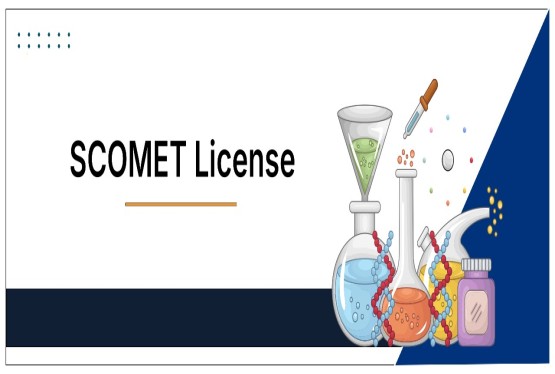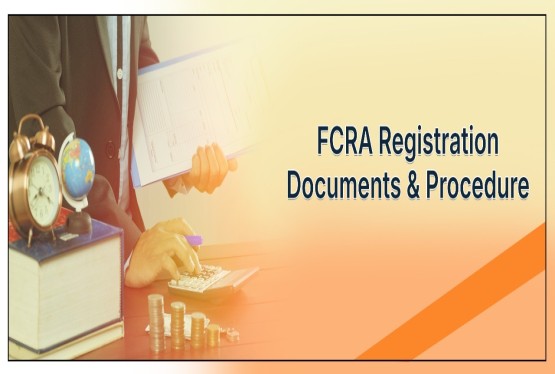Milk has been an essential part of human nutrition for thousands of years. From being the first food for newborns to serving as a daily source of nutrition for adults, milk is widely recognized for its health benefits. It is not just consumed in its raw or pasteurized form but also converted into various dairy products such as curd, yogurt, butter, cheese, ghee, and ice cream. Due to its high nutritional value and wide consumption, ensuring its safety and quality is a top priority. The Food Safety and Standards Authority of India (FSSAI) plays an important role in setting standards for milk and milk products across India to ensure that consumers receive safe, unadulterated, and nutritious dairy items.
General Principles and Application of Dairy Terms
FSSAI ensures that the use of dairy terms is accurate and does not mislead consumers. The term "milk" specifically refers to the mammary secretion obtained from healthy milch animals during normal milking, without any addition or subtraction unless specified in the regulations. The milk should not contain colostrum, which is the initial milk produced after childbirth.
In addition, FSSAI regulations guide the correct use of dairy terms for various products. These include terms related to recombined and reconstituted milk, composite milk products, and food products containing milk as a component. The enrichment or fortification of milk and milk products with essential nutrients such as vitamins and minerals is allowed but must follow strict regulatory norms. This also includes compliance with labelling standards so consumers are fully informed about what they are purchasing.
All packaged dairy products must comply with labeling regulations, except for those specifically exempted. The use of probiotics and prebiotics in dairy items is regulated under the Food Safety and Standards (Health Supplements, Nutraceuticals, Food for Special Dietary Use, Food for Special Medical Purpose, Novel Food, and Functional Food) Regulations, 2016. FSSAI also allows the use of safe and approved enzymes in the processing of milk and its derivatives, provided they comply with specific product standards.
Main Categories of Milk and Milk Products and Their Definitions
FSSAI clearly defines different categories of milk and its derivatives. This helps in standardizing production and ensuring uniformity across the dairy sector in India.
-
Milk: Milk is defined as the unmodified mammary secretion obtained from a healthy dairy animal through complete milking. It must be free from any additions or subtractions unless permitted by FSSAI standards and must not contain colostrum.
-
Dairy Product: These are products derived from milk, which may contain approved food additives and ingredients necessary for the specific product. Examples include paneer, butter, ghee, cheese, and yogurt.
-
Integrated Dairy Product: These products consist of milk or milk derivatives as a significant component in the final consumable product. They may also contain fruits, flavors, or other ingredients, but the milk component must remain dominant. Examples include fruit-flavored yogurt and shrikhand.
-
Simulated Product: These items are designed to resemble milk or dairy products but are made entirely or partially with non-dairy ingredients. They are intended to mimic the look, texture, or taste of milk-based products, such as plant-based dairy alternatives.
Specific FSSAI Standards for Different Types of Milk
FSSAI categorizes milk based on its origin and composition, specifying minimum fat and solid-not-fat (SNF) content. These standards help maintain uniformity and ensure nutritional adequacy across various types of milk.
-
Cow Milk must contain a minimum of 3.5% milk fat and 8.5% SNF.
-
Buffalo Milk must contain a minimum of 6.0% milk fat and 9.0% SNF.
-
Goat or Sheep Milk must have at least 3.0% fat and 9.0% SNF.
-
Mixed Milk (from two or more species) should contain at least 4.5% fat and 8.5% SNF.
-
Standardized Milk must have 4.5% fat and 8.5% SNF.
-
Full Cream Milk requires 6.0% fat and 9.0% SNF.
-
Reconstituted Milk must have at least 4.5% fat and 8.5% SNF.
-
Toned Milk must contain 3.0% fat and 8.5% SNF.
-
Double Toned Milk requires a minimum of 1.5% fat and 9.0% SNF.
-
Skimmed Milk should not exceed 0.5% fat and must have at least 8.7% SNF.
These specifications help prevent dilution or adulteration and assure consumers that the milk they consume meets nutritional standards.
Specific FSSAI Standards for Different Types of Milk Products
Each milk product has its own set of standards under FSSAI to ensure safety, quality, and nutritional integrity.
-
Cream: This is the fat-rich layer that rises to the surface of milk or is separated by centrifugal force. It should contain at least 25% fat and no more than 72% moisture. Additives like sugar or starch are not permitted.
-
Butter: Made by churning milk or cream, butter must have at least 80% milk fat and no more than 16% moisture. It should not contain any vegetable oils or animal fats other than milk fat.
-
Ghee: A clarified butter product, ghee must contain a minimum of 99.7% milk fat and no more than 0.3% moisture. No synthetic additives are allowed.
-
Cheese: Produced by curdling milk with enzymes or acidic substances, cheese can be soft or hard, processed or natural. The moisture, salt content, maturation period, and microbial characteristics vary by type but are regulated by FSSAI.
-
Yogurt: This fermented product is made using lactic acid bacteria. Plain yogurt must contain 3% fat and 8.5% SNF, with a titratable acidity of at least 0.7%. Flavored varieties should contain at least 2.5% fat.
-
Ice Cream: Made by freezing a mix of milk-based ingredients and sugar, ice cream must contain at least 10% fat and 11% SNF. It must not include any synthetic sweeteners or dyes.
Composite Dairy Products: Formulation, Composition, and Microbial Standards by FSSAI
Composite dairy products are those that contain milk or its derivatives as an essential component but also include other ingredients such as stabilizers, emulsifiers, or added flavors. Common examples include dairy-based desserts, cheese spreads, and infant formulas.
FSSAI sets specific standards for these products, including permissible limits for milk fat, protein, moisture, lactose, and ash content. It also regulates the types and amounts of additives that may be used, such as stabilizers and emulsifiers. These standards ensure that the dairy component remains the primary ingredient and that the product remains safe for consumption.
FSSAI also prescribes microbial limits for these products, including total plate count, coliforms, yeasts, and molds. Additionally, the hygiene and sanitary conditions during production, packaging, storage, and transportation are strictly regulated. Products must carry the dairy symbol, and if any non-dairy ingredients are used, they must be declared on the label with details of their source.
New FSSAI Regulation on Milk Analogues
Milk analogues are non-dairy alternatives that resemble milk in appearance, taste, or usage but are made from plant sources such as almond, soy, oats, coconut, or rice. With the growing popularity of these products among vegans and lactose-intolerant individuals, FSSAI has introduced regulations to govern their safety and quality.
Under the Food Safety and Standards (Food Products Standards and Food Additives) Regulations, 2011, milk analogues are subject to specific guidelines regarding composition, labeling, hygiene, permitted additives, and contaminants. These regulations ensure that milk substitutes do not mislead consumers by using terms traditionally associated with animal-based milk. Products must clearly label their plant-based source and highlight nutritional content, shelf life, and potential allergens.
By regulating milk analogues, FSSAI aims to promote transparency, protect consumer rights, and support innovation in the food sector by offering more options for those with dietary restrictions.
Importance and Objectives of Testing and Analysis of Milk and Milk Products
Testing and analysis of milk and its products play a crucial role in ensuring consumer safety. The objective is to verify compliance with food safety and quality standards and detect any possible contamination or adulteration.
These tests measure essential parameters such as fat, protein, moisture, acidity, and microbial contamination. Regular testing helps to prevent foodborne illnesses and assures consumers that they are getting wholesome products. It also ensures that dairy businesses maintain hygienic production and handling practices.
Proper analysis can identify adulterants like added water, starch, detergent, or preservatives, which may be harmful if consumed. This contributes to public health and maintains trust in dairy products.
Manual of Methods of Analysis of Foods Published by FSSAI
FSSAI has published a manual titled "Manual of Methods of Analysis of Foods" to standardize procedures for testing various food products, including milk. This manual provides scientifically validated methods that ensure consistency and reliability across different testing laboratories.
The manual includes detailed protocols for analyzing fat using the Gerber method, protein content through the Kjeldahl method, and ash content by incineration. Moisture levels are determined using oven drying, and acidity is assessed via titration using phenolphthalein. Each method is carefully explained and standardized to maintain uniformity.
Moreover, the manual describes multiple methods to detect adulteration in milk, such as testing for added starch, sugar, or detergent. It also includes methods to identify the animal species of origin in dairy and meat products. These guidelines support regulatory enforcement and help in upholding the standards set by FSSAI.
Conclusion
FSSAI Standards for Milk and Milk Products aim to ensure that every glass of milk or scoop of ice cream meets strict safety, nutritional, and quality benchmarks. These standards protect consumers, support dairy producers, and foster trust in India’s vast dairy industry. As consumption patterns evolve and new products enter the market, FSSAI continues to update and enforce these standards to meet modern needs and global food safety practices.
If you need any support in FSSAI Registration or FSSAI License, you can book a consultation with Compliance Calendar’s experts through email at info@ccoffice.in or Call/Whatsapp at +91 9988424211.
FAQs
Q1. What is the definition of milk under FSSAI standards?
Ans. Under FSSAI regulations, milk refers to the normal mammary secretion obtained from healthy milch animals through complete milking, without any addition or extraction, and must not contain colostrum. It should be safe, clean, and intended for direct consumption or processing into milk products.
Q2. What are the FSSAI-specified fat and SNF content for different types of milk?
Ans. FSSAI has specified minimum fat and Solid-Not-Fat (SNF) content for various types of milk. For example, cow milk must have at least 3.5% fat and 8.5% SNF, while buffalo milk requires 6.0% fat and 9.0% SNF. These specifications ensure uniformity and nutritional quality.
Q3. Are milk analogues like almond or soy milk regulated by FSSAI?
Ans. Yes, FSSAI regulates plant-based milk alternatives under the Food Safety and Standards (Food Products Standards and Food Additives) Regulations, 2011. These products must not misuse dairy terms like “milk” or “cheese” and must be clearly labeled with their plant-based source and composition.
Q4. What labeling rules apply to packaged milk and dairy products?
Ans. FSSAI mandates that all packaged milk, milk products, and composite dairy items must comply with proper labeling requirements. These include the declaration of ingredients, nutritional information, allergen warnings, and whether the product is reconstituted, recombined, or fortified.
Q5. What are composite dairy products and how are they regulated?
Ans. Composite dairy products contain milk or milk components combined with other food ingredients. FSSAI defines their permissible composition, additives, microbial limits, and hygiene standards. Examples include fruit yogurt, cheese spreads, and dairy-based desserts.
Q6. How does FSSAI ensure the safety and quality of milk products?
Ans. FSSAI enforces safety and quality through routine inspections, microbial testing, compositional analysis (fat, protein, moisture, acidity), and adulteration detection methods. These ensure the dairy products meet national safety benchmarks and are safe for consumption.
Q7. Can enzymes be used in the processing of milk products under FSSAI norms?
Ans. Yes, FSSAI permits the use of safe and approved enzymes as processing aids in milk and its derivatives. These enzymes must align with the specific standards defined for each dairy product and must not compromise product safety or quality.












































































_crop10_thumb.jpg)







_Rules,_2025_learn_crop10_thumb.jpg)
























































































_crop10_thumb.jpg)








 in BIS FMCS_learn_crop10_thumb.jpg)










_crop10_thumb.jpg)














_crop10_thumb.jpg)





_Code C-888_learn_crop10_thumb.jpeg)
_learn_crop10_thumb.jpg)

































































_Certificate_learn_crop10_thumb.jpg)

_Certificate_(1)_crop10_thumb.jpg)















_learn_crop10_thumb.jpg)

_crop10_thumb.jpg)


















_Scheme_learn_crop10_thumb.jpg)


_learn_crop10_thumb.jpg)










